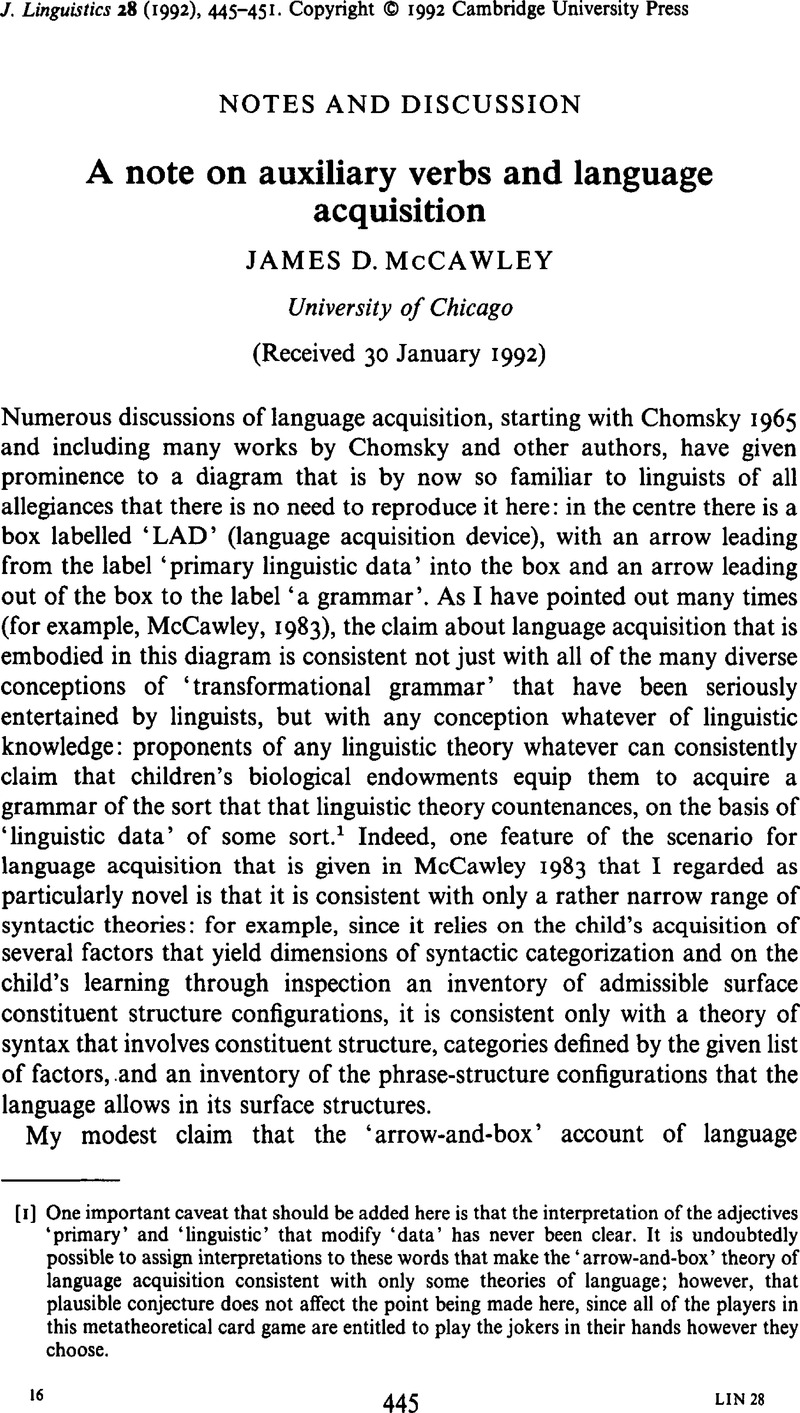No CrossRef data available.
Article contents
A note on auxiliary verbs and language acquisition
Published online by Cambridge University Press: 28 November 2008
Abstract
An abstract is not available for this content so a preview has been provided. Please use the Get access link above for information on how to access this content.

- Type
- Notes and Discussion
- Information
- Copyright
- Copyright © Cambridge University Press 1992
References
REFERENCES
Lightfoot, D. (1989). Matching parameters to simple triggers. Behavioral and Brain Sciences 12. 364–75.CrossRefGoogle Scholar
McCawley, J. D. (1982). The nonexistence of syntactic categories. In McCawley, J. D., Thirty million theories of grammar. London: Croom Helm & Chicago: University of Chicago Press.Google Scholar
McCawley, J. D. (1983). Towards plausibility in theories of language acquisition. Communication and Cognition. 169–83.Google Scholar
McCawley, J. D. (1988). The syntactic phenomena of English. Chicago: University of Chicago Press.Google Scholar
McCawley, J. D. (1989). INFL′, Spec, and other fabulous beasts. Behavioral and Brain Sciences 12. 350–2.CrossRefGoogle Scholar
McCawley, J. D. (1991). ‘Negative evidence’ and the gratuitous leap from principles to parameters. Behavioral and Brain Sciences 15. 627–8.CrossRefGoogle Scholar
McNeill, D. (1966). Developmental psycholinguistics. In Smith, F. & Miller, G. A. (eds.) The genesis of language. Cambridge, MA: MIT Press. 15–84.Google Scholar
Rommetveit, R. (1979). On the relationship between children's mastery of Piagetian cognitive operations and their semantic competence. In Rommetveit, R. & Blakar, R. M., Studies of language, thought and verbal communication. London & New York: Academic Press. 457–66.Google Scholar
Ross, J. R. (1969). Auxiliaries as main verbs. Studies in Philosophical Linguistics 1. 77–102.Google Scholar
Schachter, P. (1983). Explaining auxiliary order. In Heny, F. & Richards, B. (eds.) Linguistic categories, vol. 11. Dordrecht: Reidel. 145–204.Google Scholar




